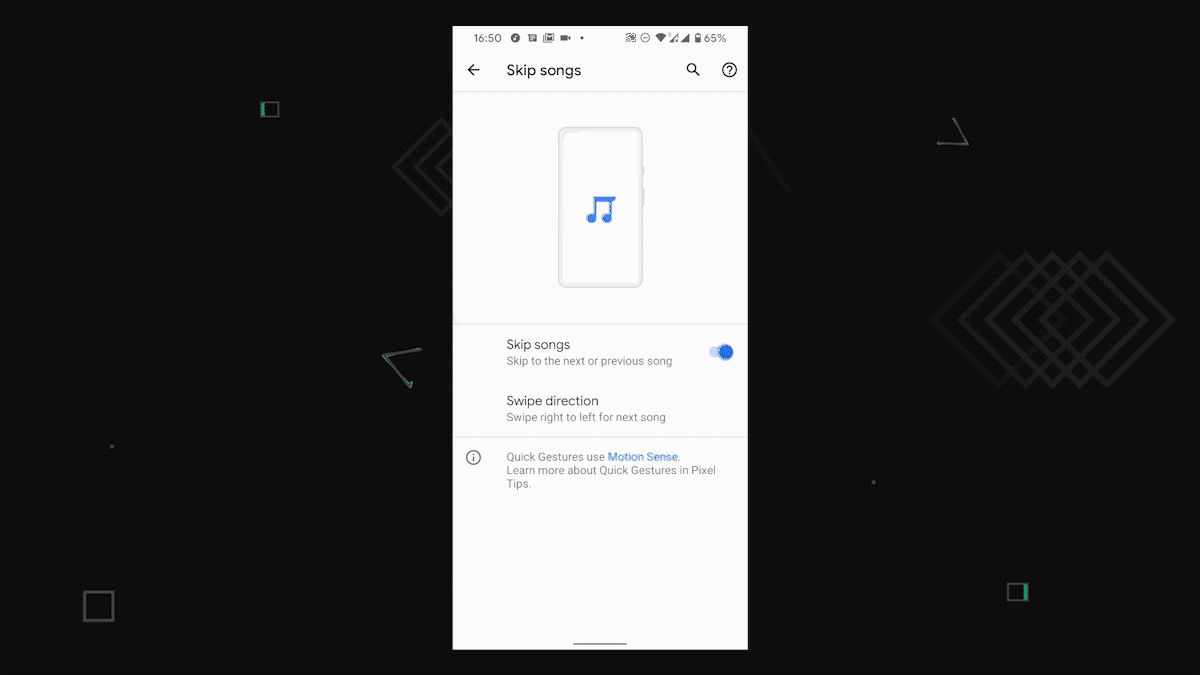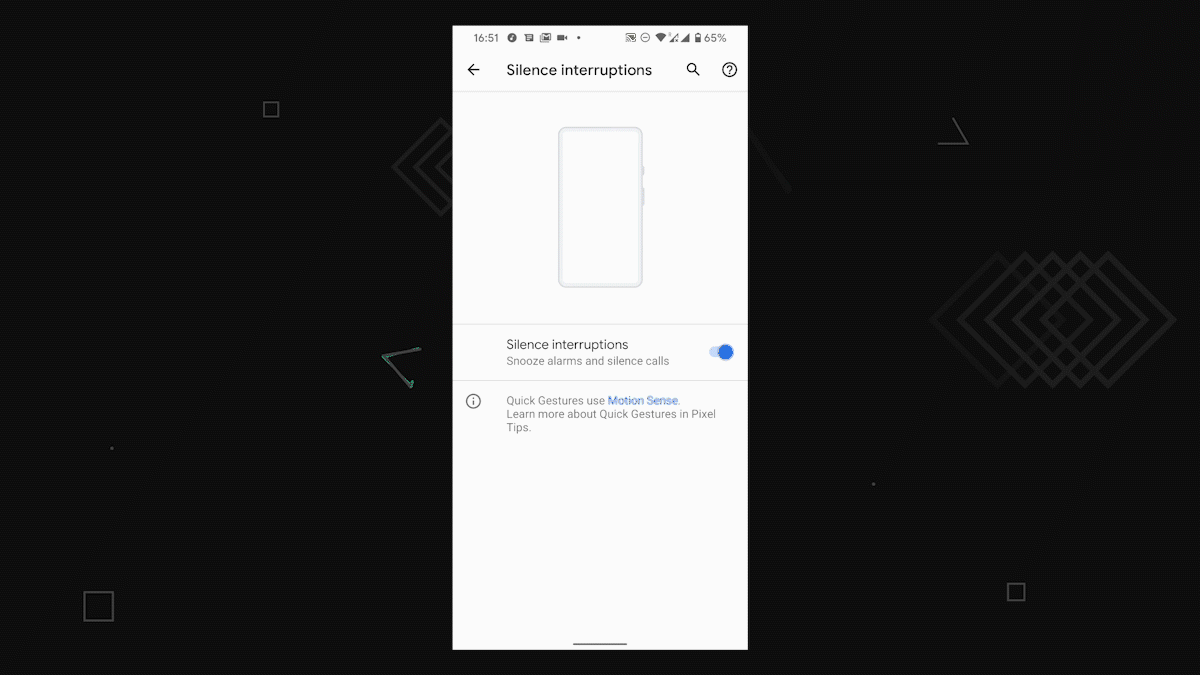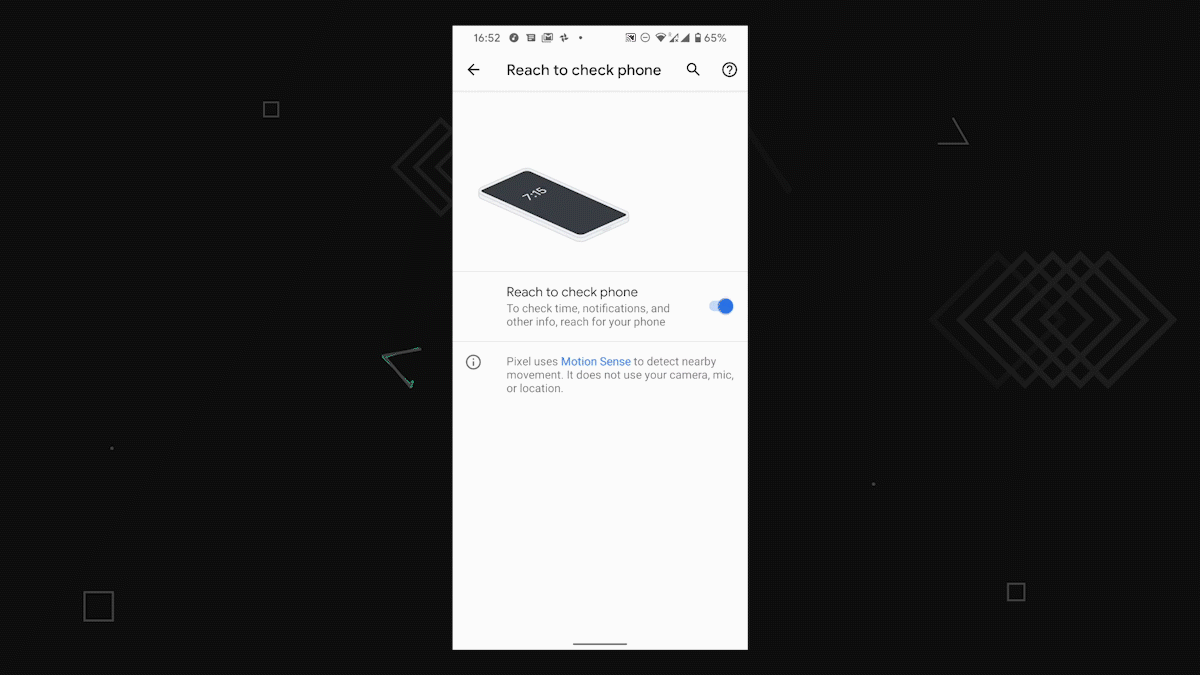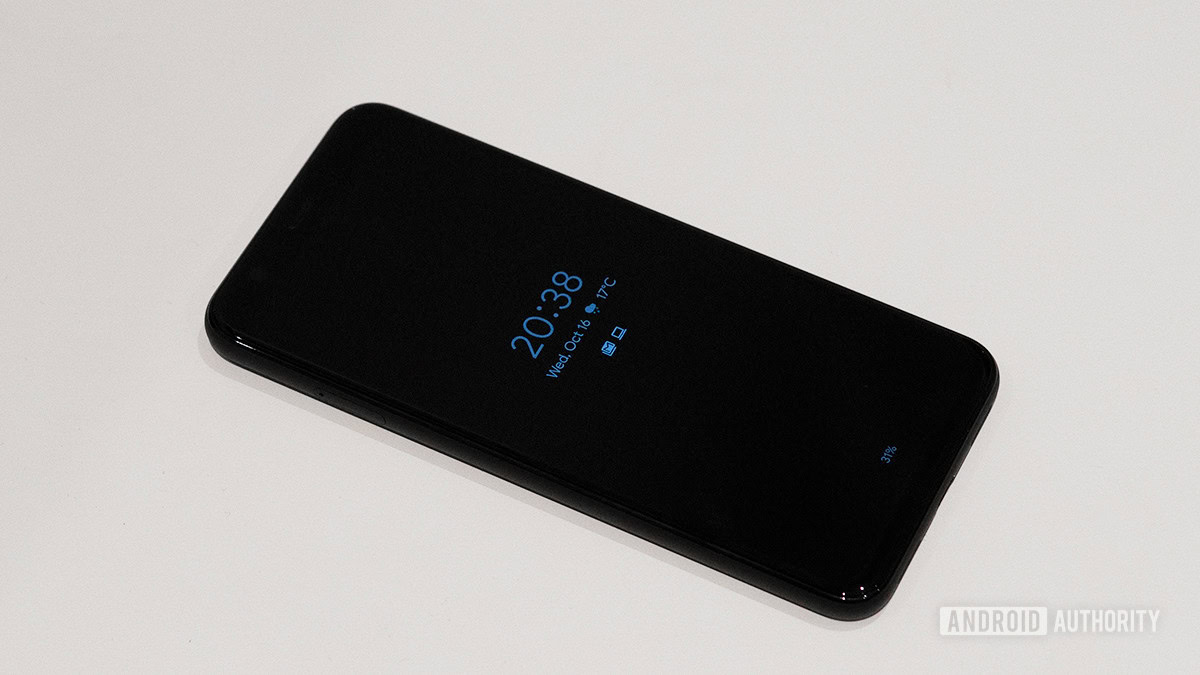Affiliate links on Android Authority may earn us a commission. Learn more.
How Motion Sense works on the Pixel 4
One of the most exciting features on the Pixel 4 is its radar. Positioned just to the right of the earpiece speaker, the Soli radar creates a kind of field around the Pixel 4 that can detect movement. Depending on what’s happening at the time, your Pixel 4 can then predict what you want to do and help you do it. Let’s go through the various Motion Sense features the radar enables in more detail and explain exactly what they do.
What is Motion Sense?
Motion Sense is the name Google gives to the various radar-sensing features in the Pixel 4. You can get to the Motion Sense menu via Settings > System > Motion Sense. The section is divided into two parts:
- Quick Gestures – skips songs, silence interruptions
- Ambient Display – show display when nearby, reach to check phone
Each feature can be enabled or disabled individually and there’s a toggle to turn the radar on or off altogether. It should be noted that Motion Sense features will not work when your Pixel 4 is in battery saving mode or in airplane mode. So you know what they all do and how they work, let’s tackle them one by one.
Skips songs

This Motion Sense feature is pretty self- explanatory but it’s a little cooler than you might first think. When enabled, you simply pass your hand from left-to-right or right-to-left in front of the radar sensor to skip tracks forwards or backward. This works not only in your music app but throughout the Pixel software, so you can control your music from anywhere at any time. You can reverse the direction of the gesture if you want to.
It doesn’t matter how you hold your hand either: it works both flat-palmed and in karate chop style. The only trick here is to not have your hand too far away from the radar sensor or it might not pick up the gesture.
Silence interruptions

This might be the best Motion Sense feature of all right now (Google says it will add more as time goes by). It’s actually a two-part feature as it can be used both for lowering volume as well as silencing your phone. The radar detects when your hand comes close to your phone and lowers the volume of an alarm or phone call.
You can also use the same gesture as you would to skip a song. If an alarm is going off, simply wave it away to snooze the alarm for 10 minutes. If a timer alarm is going off, you can silence it entirely by using the skip songs gesture. The same gesture silences an incoming call but you can’t dismiss a call this way, only silence it.
Reach to check phone

Reach to check phone is a pretty straightforward Motion Sense feature as well. As in the example above, it uses the radar to detect when your hand comes within range of your phone and lights up your lockscreen to display the time and notification icons. But it also activates the two infrared face unlock cameras resulting in much faster face unlocking.
Interestingly, the Soli radar can distinguish between your hand reaching for your phone and waving across it as in the examples above. If you wave your hand across the screen, reach to check phone won’t actually be activated. You actually have to reach for your phone for it to work.
The existing Android feature “raise to wake” is also present on the Pixel 4 and technically does the same thing as reach to check phone, but with a key difference. With raise to wake, you have to first pick up the phone to activate the lockscreen and face unlock cameras. Reach to check phone is much faster because it activates everything before you even touch it. This is what makes the Pixel 4’s face unlock so much faster than other face unlocking systems that rely on raise to wake.
Show display when nearby

Show display when nearby can only be used if you’ve also enabled the Pixel 4’s always-on display. When this Motion Sense feature is enabled, the Pixel 4 will only activate the display when you are nearby. This results in better battery life than simply using the always-on display. The only issue is that your screen will light up whenever you’re near it, which might be mistaken for incoming notifications.
As you can see, Soli introduces a lot of cool new features to the Pixel 4. What’s your favorite? Let us know in the comments.